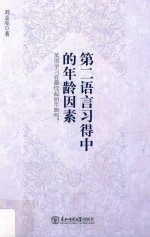
- 作 者:刘志亮著
- 出 版 社:长春:东北师范大学出版社
- 出版年份:2016
- ISBN:9787568112826
- 标注页数:181 页
- PDF页数:199 页
请阅读订购服务说明与试读!
订购服务说明
1、本站所有的书默认都是PDF格式,该格式图书只能阅读和打印,不能再次编辑。
2、除分上下册或者多册的情况下,一般PDF页数一定要大于标注页数才建议下单购买。【本资源199 ≥181页】
图书下载及付费说明
1、所有的电子图书为PDF格式,支持电脑、手机、平板等各类电子设备阅读;可以任意拷贝文件到不同的阅读设备里进行阅读。
2、电子图书在提交订单后一般半小时内处理完成,最晚48小时内处理完成。(非工作日购买会延迟)
3、所有的电子图书都是原书直接扫描方式制作而成。
导读 1
Chapter 1:Introduction 26
1.1 Background 26
1.2 The aims of the study 28
Chapter 2:Related Theories on FLES 31
2.1 Critical period hypothesis(CPH) 31
2.2 Non-critical period hypothesis 35
2.3 Piaget's theory on child language learning 37
2.4 Importance of mother tongue 38
2.5 FLES in China and its language environment 42
2.6 Clear-up of the key terms 43
2.6.1 Second language and foreign language 43
2.6.2 Acquisition and learning 47
2.7 The optimal age question 48
2.8 Summary 54
Chapter 3:Literature Review of FLES at Home and Abroad 55
3.1 Previous research into FLES abroad 56
3.1.1 First stage 56
3.1.2 Second stage 57
3.1.3 Third stage 59
3.1.4 Summary 60
3.2 Previous research into FLES in China 61
3.2.1 A brief history of FLES since the early 1960s 61
3.2.2 Three branches of viewpoints on FLES in China 63
3.2.3 Summary 77
Chapter 4:Analyses on the Results of the Questionnaires 79
4.1 Statistics on the views of the 32 students on FLES 79
4.2 Personal experience and original views from the students on FLES in China 80
4.2.1 Personal experience 82
4.2.2 Original views on FLES in China 83
4.2.3 Summary 87
4.3 Statistics on the views of the 32 parents on FLES 89
4.4 Original comments and views from the parents on FLES in China 91
4.4.1 Original comments on the questions 92
4.4.2 Original views on FLES in China 93
4.4.3 Summary 95
4.5 Statistics on the views of the 31 teachers on FLES 96
4.6 Original comments and views from the teachers on FLES in China 97
4.6.1 Original comments on the questions of the 31 teachers on FLES 98
4.6.2 Original views on FLES in China 106
4.6.3 Summary 110
Chapter 5:Analyses of the Students' Scores and the Tests 112
5.1 Average scores of the students in junior 1—3 and senior 1—2 112
5.2 Descriptive statistics of the scores 116
5.3 Paired samples test on the scores of junior 1—3 and senior 1—2 118
5.4 Summary 120
Chapter 6:Conclusion 122
6.1 Conclusion of the survey 122
6.2 Limitations of the survey and suggestions for its further research 126
Notes 128
Bibliography 130
Appendix 158
后记 179
